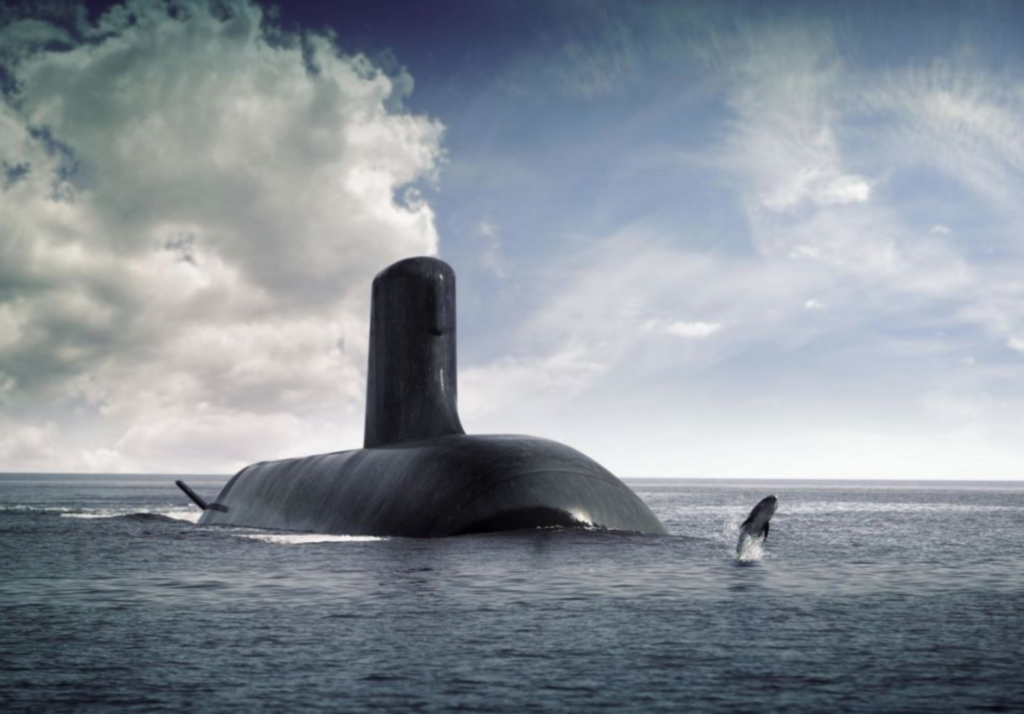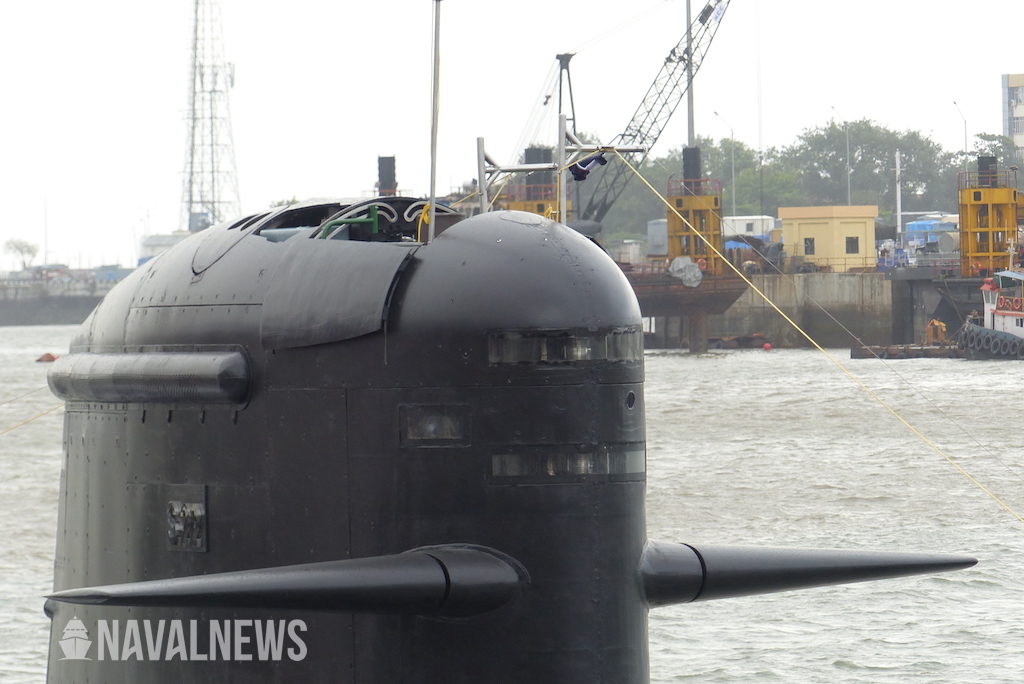What can we expect from Naval Group proposal for P75I ?
Project 75-India is due to be the follow-on of the Kalvari-class. Six new submarines are due to be built in an Indian shipyard under Make In India, meaning that at least 50% of the added value has to be produced in India. At the origin of P75 and P75I, the Indian Navy wanted 24 conventional submarines from two different foreign manufacturers, which could have ended Naval Group’s hopes on the P75I.
But the considerable delays in submarine procurement in India offers new opportunities for the French group. Indeed, multiplication of foreign acquisitions and TOT could only help indigenous designs if the programs succeed one another in a timely fashion. When MDL started the production of the Kalvari-class, the knowledge acquired while building the Shishumar-class in the 1980s was already fading away.
Two of the four Shishumar-class Type 209-1500 undergoing maintenance and repair tasks in Mumbai late September. If two Type 209 were build at MDL, the first two of class were directly delivered from Germany in the early 1980s.
On the contrary, developing a strategic long term partnership with a single OEM could lead to a fast growing local industry and a successful indigenisation program, just like the South Korean KSS-I, KSS-II and KSS-III programs.
Last April, the Indian Navy has issued an Expression of Interest for six submarines under the P75I project. France’s Naval Group, Russsia’s Rosoboronexport, Germany’s TyssenKrupp and Sweden’s Saab are the main contenders in the tender. But the choice of the shipyard is also a major political and industrial concern in this project.
Compared to P75, the P75I submarines will have to be bigger ships, with AIP propulsion, the ability to carry a dozen cruise missiles alongside the torpedoes and anti-ship missiles. Such requirements made the Scorpène unsuitable for the P75I.
One of the nine remaining Kilo-type submarines of the Indian Navy seen at Mumbai Naval Base. Ideally, the future P75I submarines could be even bigger than the Kilo and stealthier than the Scorpène-type, with longer duration at sea and far greater weaponry.
Naval Group is therefore thinking about a whole new design for the Project 75I. As
Naval News learned from Naval Group officials,
“it will neither be a stretched Scorpène derivative, nor a Barracuda family derivative”.
French proposal for P75I could then be a new design displacing around 3,000 tons specifically adapted for Indian Navy needs.
While the Scorpène is a best seller in the 2,000 tons-category, the Barracuda design is in a league of its own, in the +5,000 tons-category.
A new 3,000 tons ship could fill a gap in Naval Group products family and allow the French company to compete with the Russian Lada-class, Japanese Sōryū-class, Chinese Yuan-class or even Spanish S-80 Plus design.
The nuclear powered Suffren-class in France and conventional powered Attack-class in Australia are both part of the Barracuda family, which is also proposed to the Dutch Navy. Those submarines are in the 4000-5500 tons categories, too heavy for the P75I. ©Naval Group
It is still unclear if such a new design, if selected, will be made solely by Naval Group’s teams or in cooperation with Indian shipbuilders.
Nevertheless, Naval Group officials confirmed that, in order to achieve the 50% of MII, the TOT can’t focus solely on design work and mechanical production. The transfer of technology will then have to include the Combat Management System that is currently one of the key features of Naval Group submarines.
“On P75I, we are well placed to be selected by the Indian Navy. The entire P75 program went very well and we are now partnering with the Navy for the maintenance and repair of all the Kalvari-class submarines. After what was accomplished on the P75, we are the only company in the world to have demonstrate complete TOT on a major submarine program.”
Olivier de la Bourdonnaye – Director of Programs, Naval Group – met in Mumbai, September 28, 2019.
The Kalvari-class submarine are equipped with optronic mast from Safran and a complete sonar suite from Thales
https://www.navalnews.com/naval-new...ioning-what-is-naval-groups-outlook-in-india/





